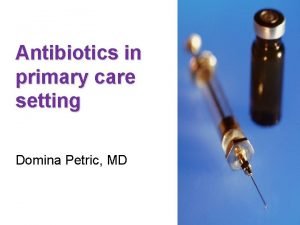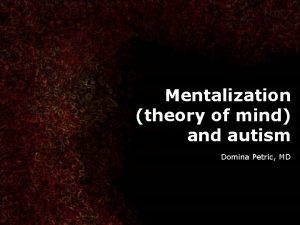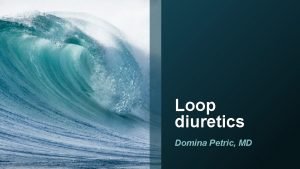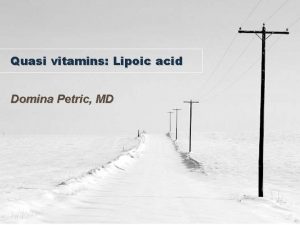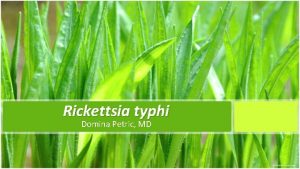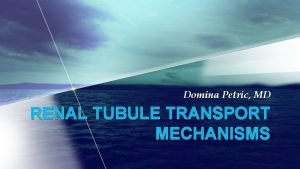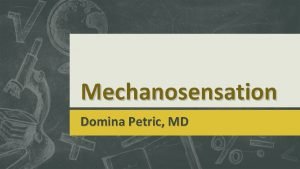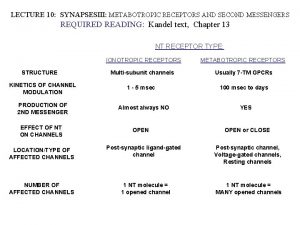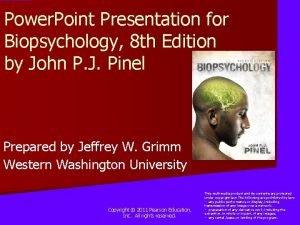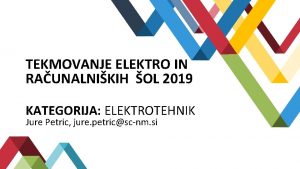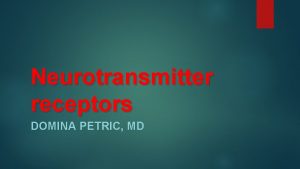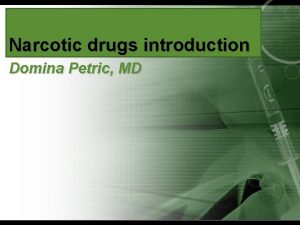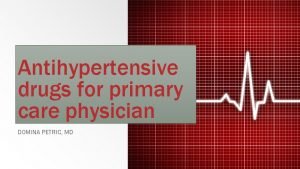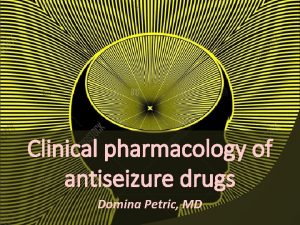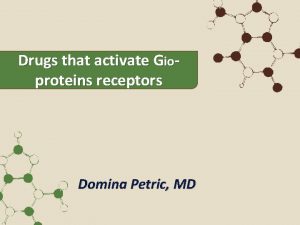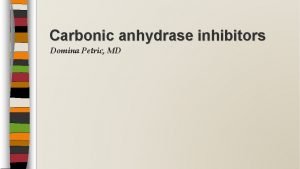Domina Petric MD Drugs that act on ionotropic














- Slides: 14

Domina Petric, MD Drugs that act on ionotropic receptors 01

Nicotine is selective agonist of nicotinic acetylcholine receptors (n. ACh. R). n. ACh. R are very important in many cognitive processes. 03

Nicotine • Rewarding effect of nicotine is associated with ventral tegmental area (VTA) where there are n. ACh. R on dopaminergic neurons. n. ACh. R that contain α 4β 2 component are especially important for the rewarding effect of nicotine. DEFAULT STYLES Abstinence syndrome irritabilit y insomnia Nicotine is very addictive 04

Treatment – Partial agonists of α 4β 2 n. ACh. R: citizine and varenicline. – Bupropion! – Cognitive and behavioral therapy. 05

Benzodiazepines and barbiturates • Benzodiazepines are safer than barbiturates. • Physical addiction on benzodiazepines is very common. • Abstinence syndrome: irritability, insomnia, phonofobia, photofobia, depression, muscle cramps and convulsions.

Benzodiazepines and barbiturates Benzodiazepines are positive modulators of GABAA receptors.

Alcohol modulates function of several receptors and cell functions: • GABAa receptors • Kir 3/GIRK channels • return entry of adenosine • glycine receptors • NMDA receptors • 5 -HT 3 receptors

Alcohol • Physical addiction becomes evident after 6 -12 hours of heavy drinking cessation. • Abstinence syndrome: tremor (mostly hand tremor), vomit, nausea, excessive sweating, agitation and hearing hallucinations 12 to 24 hours after drinking cessation.

Alcohol • Generalised convulsions can appear 24 to 48 hours after drinking cessation. • After 48 to 72 hours delirium tremens can appear: patient is disoriented, hallucinates and there is autonomic instability. • Mortality rate of delirium tremens is 5 -15%.

Treatment of alcohol abstinence syndrome is based on lorazepam and oxazepam. Psycho-social approach is very important.

Ketamin and phencyclidine are non competitive antagonists of NMDA receptors. Psychedelic affect lasts for about an hour. They do not cause addiction. Chronic abuse can cause permanent psychosis similar to schizophrenia.

Inhalant drugs Nitrates, ketones and aromatic hydrocarbons: sniffing, huffing or bagging. Most of inhalant drugs create euphoria: for example, toluene causes increase in VTA excitability. Amyl nitrate (poppers) cause smooth muscle relaxation and improve erection. VTA: ventral tegmental area

Inhalant drugs They have toxic affect on many organs. They cause lesions of white matter in central nervous system. Treatment of overdose is supportive.

Katzung, Masters, Trevor. Clinical pharmacology.
 Rexocef 100
Rexocef 100 Domina petric
Domina petric Domina petric
Domina petric Quasi vitamins
Quasi vitamins Md
Md Domina petric
Domina petric Pseudomonopolar
Pseudomonopolar Difference between ionotropic and metabotropic receptors
Difference between ionotropic and metabotropic receptors Three phases of action potential
Three phases of action potential Jure petric
Jure petric Sveta lucija pjesma
Sveta lucija pjesma Con hãy đưa tay khi thấy người vấp ngã
Con hãy đưa tay khi thấy người vấp ngã Thơ thất ngôn tứ tuyệt đường luật
Thơ thất ngôn tứ tuyệt đường luật Tôn thất thuyết là ai
Tôn thất thuyết là ai Walmart thất bại ở nhật
Walmart thất bại ở nhật
